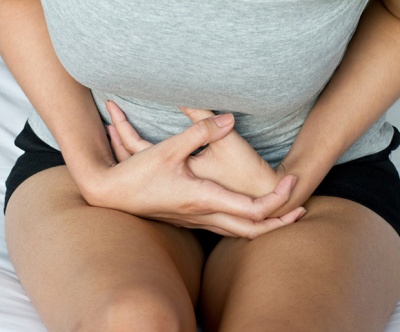
So, if hormonal birth control can cause a range of chronic conditions in women of all ages, what is the answer? Well, that sure is the question of the hour and certainly one I see women struggle with time and time again in my practice and beyond. The answer isn’t short and sweet, but I will do my best here to make it clear. In this post I will explain again the problem with suppressing menses, offer some best case solutions from my perspective, and review the options out there ranking them from least to most harmful. I’ll be honest ladies, the answers aren’t in our favor, and for some it’s going to be a matter of what’s the least harmful approach and what you can do to best support your body at the time.
Truthfully, there is no perfect answer and hormonal altering methods all will have a serious impact on your body. The greatest problem being the possible loss of a regular menstrual flow which does the following:
- Puts undue pressure on the kidneys and bowel elimination systems causing aggravated conditions such as irritable bowel symptoms, constipation, or recurring urinary tract infections.
- The body will use emergency exits in order to clean—include the vagina (yeast infections), the skin (acne, eczema, rashes, etc), sinuses (sinusitis), lungs (asthmatic symptoms).
- Overall increased inflammation in the abdominal region leading to the production of cycsts and growths (benign and/or cancerous).
Important fact: Any woman who has less than optimal elimination prior to suppressing their menses is going to face a host of symptoms, many with long term impact. Optimal elimination is two well formed bowel movements a day, no night waking to urinate, a relatively painfree 4-5 day menses with continuous, manageable flow (no spotting, brown bleeding, heavy cramping, start-stop of flow).
To begin this discussion, however, I want to share my optimal responses to a variety of scenarios I see in my practice.
Scenario 1—Young Teen (Mom Alert!):
You are a not yet sexually active teen.
You get help now to support your body’s ability to eliminate, especially if you have experienced ANY of the following:
• A urinary tract infection or kidney infection at any point in time
• Waking at night to urinate
• Frequent daytime urination
• Fewer than two pain free, formed bowel movements daily
• Pain, bloating, burping, acid reflux associated with digestion
• Acne, eczema, rashes
• Chronic sinus congestion
• Asthmatic symptoms
• Heavy menstrual flow, clotting, brown bleeding, spotting between or during menses, irregular cycle, painful menses
In my practice, support to ease these symptoms would take the form of:
- dietary changes to reduce inflammation (namely elimination of dairy and reduction of processed foods);
- a gemmotherapy protocol;
- a homeopathic treatment to address the constitutional imbalance.
If and when hormonal birth control is started, then the diet and gemmotherapy should be continued to support the organs of eliminaiton and reduce the build up of inflammation.
Scenario 2—Sexually active young woman using a hormonal birth control:
You take a physical inventory to see if you are experiencing any of these symptoms:
• A urinary tract infection or kidney infection at any point in time
• Waking at night to urinate
• Frequent daytime urination
• Less than two pain free, formed bowel movements daily
• Pain, bloating, burping, acid reflux associated with digestion
• Acne, eczema, rashes
• Chronic sinus congestion
• Asthmatic symptoms
• Heavy menstrual flow, clotting, brown bleeding, spotting between or during menses, irregular cycle, painful menses
• Recurring pain or numbness anywhere in your body (including the head)
If so, I would recommend the following steps.
- Give your body a 30-60 day break from “X” birth control method
- During that break detoxify your body to establish healthy elimination and address the symptoms you are experiencing. This would be achieved with dietary changes, a gemmotherapy protocol and homeopathic treatment if needed.
- During this time use a barrier method (see chart below) AND chart your fertility with a suggested app
- Then select a method below best suited for you—mindfully watching your body for any of the above listed symptoms to appear and keep the length of time you use this method to a minimum
Scenario 3: Sexually active young woman using hormonal birth control, in a committed relationship and desiring children in the next year:
It is never too soon to clean and prepare your body for pregnancy—any reduced elimination your body has experienced shifts your body into a highly acidic pH state—that is far from ideal for fertility or for a developing baby!
Discuss your plans and the reason behind them with your partner and create a workable solution with charting your fertility and using barrier methods during highly fertile periods while maintaining the intimacy level you enjoy.
Scenario 4: In a committed relationship and between children
I would suggest you follow the same plan above for those preparing for a new pregnancy.
In all the above scenarios know this about all forms of hormonal birth control…..
- They do reduce a woman’s body’s ability to clean and naturally heal from symptoms
- As the eliminating and cleaning abilities reduce, inflammation increases and symptoms begin to appear. Usually these symptoms show up 1 to 3 months later and accumulate over the years of use.
- If hormonal birth control is the only option due to your current circumstances then you can and should by all means:
– Decrease the inflammation by decreasing consumption of inflammatory foods and following a plant based diet.
– Use a Gemmotherapy protocol to enhance the function of your bowel, kidney and support your liver.
The available options:
Least disruptive to the body’s harmony, however, statistically the least reliable in preventing pregnancy:
Fertility Tracking: In this method, a woman uses one of a variety of techniques to determine when she is fertile during the month and abstains from sexual intercourse or uses a barrier method during the window of fertility to avoid pregnancy. There are high tech apps and lo-tech charts to record information throughout the month. Here is an app I recommend.
Barrier Methods: Can be combined with fertility tracking. They work by physically preventing the sperm from reaching the egg. Options include male and female condoms, the diaphragm, and the cervical cap. To increase the protection spermicidal foam, jelly, cream, film, or suppository is recommended. These are not non-toxic substances and can cause irritation in those who are sensitive.
Least disruptive to the body’s harmony and statistically quite reliable in preventing pregnancy:
Copper IUD: Here is a fact sheet about the Copper IUD. The good news is it does not use hormones to prevent pregnancy and is very reliable. The bad news is that women with less than perfect elimination, who already have heavy cramping and or bleeding will likely find that those symptoms increase. This would be a good option if there is work done prior to harmonize the body, relieve all elimination symptoms and continue on a protocol throughout the use.
Moderately disruptive to the body’s harmony and statistically quite reliable in preventing pregnancy
Oral birth control pills: The Mayo clinic provides a comprehensive run down of the variety of pills available today. There are side effects and the use of hormones to suppress ovulation and/or pregnancy can cause a wide range of symptoms from emotional to skin conditions. Reducing your body’s state of inflammation through diet and a gemmotherapy protocol will alleviate but not cure the side effects.
Highly disruptive to the body’s harmony, causing clear immediate side effects and often facing a serious challenge in restoring a normal cycle and fertility at a later date. These should be avoided under all circumstances.
• Hormone releasing IUDs (Mirena)
• Implants (Norplant)
• Hormone shots (Depo-Provera)
• A vaginal ring (NuvaRing)
• A contraceptive patch (Ortho Evra)
So it’s a dilemma. Protecting your body and yourself from pregnancy don’t perfectly align. That is not a goal of the pharmaceutical industry. The best solution for you will depend on your age and circumstances at the time. This is a conversation that needs to occur early and often with the young women in your lives.
Here is the bottom line from my perspective:
The best case scenario is to balance and support your elimination before and during the use of any hormonal birth control method that suppresses your menstrual flow. Then, don’t use hormonal birth control, or for that matter any medication, on “autopilot” watch your body and its response. The first sign will always be a change in elimination. If/when that changes, other symptoms will certainly follow.
This is a tough, emotionally charged issue with, unfortunately, no clear path to follow. I think it’s important to talk about the other side of hormonal birth control which you are likely not getting from your Ob/Gyn. I’m not sharing data but rather real stories from real people who wished they had been given more and better information. Next week I will address endometriosis and the prescribing of hormonal birth control to suppress the symptoms.







 I think it is all of the possible variations to this recipe that I love the most. But then again I also love the fact I can make extra and it tastes even better the next day! Whatever the case may be you will no doubt need to add this
I think it is all of the possible variations to this recipe that I love the most. But then again I also love the fact I can make extra and it tastes even better the next day! Whatever the case may be you will no doubt need to add this